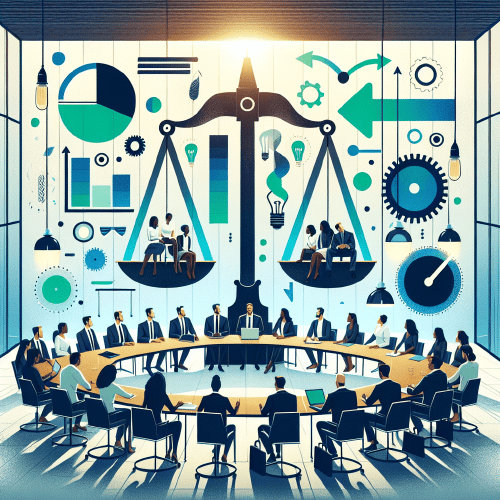Improving Developer Experience, Level 3: The Triad of Clarity, Focus, and Flow
Last week, we delved deep into “Belonging, Collaboration, and Communication“. Further up in the Maslow Pyramid of DevEx, we have the factors that affect focus, clarity, and flow. This article will explore how we can improve those factors.
Clarity, focus, and flow are connected areas. Without focus, there will be no flow, which is meaningless (and unlikely) without clarity. Lack of clarity can lead to frustration and the need for additional alignment, often interrupting focus.
Clarity: Finding Meaning in Work 🧭
A sense of clarity is frequently likened to navigating with a compass. When engineers have a clear direction, their steps become purposeful, obstacles become navigable, and success is just around the bend.
Let’s dive deeper into how clarity shapes the world of engineering.
- Purpose-driven Development: People are intrinsically motivated when they understand the bigger mission behind their daily work. It’s not just about writing code; it’s about building something that matters. This connection between the “why” and the “how” becomes a wellspring of motivation and focus. I wrote an article series on high-purpose environments that you might find interesting.
- Defined Outcomes: With a clear end goal, teams can better navigate their tasks, prioritize their efforts, and visualize the desired outcome. This clarity eliminates guesswork, reduces wasted efforts, and ensures the journey is as impactful as the destination.
- Working Iteratively with Feedback: Iteration goes hand-in-hand with feedback. By constantly seeking input and making course corrections, teams refine their approach, reduce errors, and elevate the quality of their work. These feedback loops ensure the development process is dynamic, responsive, and aligned with the end goals.
Clarity, in essence, is the compass every engineer needs. It provides direction, fuels motivation, and ensures that every step taken is in sync with the broader mission. By emphasizing clarity in mission, goals, and process, we pave the way for engineering excellence. Like a compass, clarity, from purpose and mission, should not restrict autonomy in the path toward the goal. With fast and continuous feedback, teams can find the best approach autonomously.
Focus: The ONE Thing 🔍
Maintaining focus has become both a challenge and a necessity for engineers in a world filled with distractions and ever-growing task lists. The ability to channel one’s entire attention on a task sets ordinary apart from extraordinary results. Let’s unpack the critical elements that contribute to unparalleled focus in engineering.
- Uninterrupted Time: Dedicating blocks of uninterrupted time allows engineers to dive deep into complex problems without the constant ping of notifications. Solutions often emerge in these moments of concentration and deep work, and productivity soars. — Deep work can happen with the team, as long as the focus is on a single task or goal (see “Deep Work is a Team Effort”).
- WIP – Less is More: By limiting the number of tasks or projects in progress, teams can devote their full attention to each. This not only enhances the quality of the work but also accelerates completion rates. If the WIP limit is higher or equal to the number of engineers in a team, it is unlikely that they will collaborate as a team. They will get sidetracked by their individual tasks.
- Cost of Context Switching: Every interruption, no matter how short, forces engineers to switch contexts. Returning to the original task typically takes longer than anticipated, leading to diminished productivity and increased frustration. I wrote more on this in my article “The Value of Deep Work for Peak Performance”. Teams need to be able to isolate. Distractions from incidents or colleagues should be seen as a learning opportunity to improve the system, the documentation, the process, or the structures to remove the need for such distractions.
Like a magnifying glass, focus amplifies effort and attention, leading to better outcomes. By understanding its intricacies and adopting practices that foster it, teams can produce exceptional quality and impact work at outstanding speed.
Flow: The Zen State 🧘♂️
Teams are in a flow state at the intersection of clarity and focus. Frequently described as being “in the zone”, flow is where time seemingly flies by, and work unfolds effortlessly. Achieving this state consistently, however, requires a balance of several ingredients:
- Embracing Autonomy: Granting teams autonomy over how they approach a challenge, which tools they employ, or methodologies they adopt, or which path they choose instills a sense of ownership and drive. This self-direction often propels them straight into the flow state.
- Balancing between Challenging and Possible: Too easy tasks can lead to boredom, while overly complex ones can cause anxiety. Striking the right balance by letting engineers pick or define the tasks they want to tackle and letting teams collaborate freely can keep them engaged and in flow.
- Understanding Time: Deadlines, when set realistically, can be motivating. However, unreasonable ones can be stifling, breaking the state of flow. Sometimes, removing the pressure of deadlines altogether can lead to organic and profound results.
- Continuous Feedback: Tools that provide instantaneous feedback allow immediate adjustments, keeping people in a loop of continuous improvement and sustained flow. Automated tests, fast builds, and continuous deployments with proper monitoring and feedback mechanisms can serve continuous feedback to the team.
When all these elements harmoniously converge, teams can find themselves in a state of flow, producing work of unmatched quality at an unprecedented pace. Embracing and nurturing these conditions is the secret to unlocking consistent excellence.
In Summary: The Triad for Optimizing Developer Experience
Within the comprehensive framework of Developer Experience, three pillars emerge as instrumental to engineering excellence: Clarity, Focus, and Flow.
- Clarity is crucial to align individual tasks with overarching organizational goals, ensuring that every effort is purpose-driven and contributes meaningfully to the broader mission.
- Focus is paramount in our contemporary, information-rich environment. Maintaining undivided attention on a singular task enables teams to delve deeply, fostering precise understanding and better problem-solving.
- Flow represents the optimal state of productivity, a juncture where skill meets challenge without the impediments of external interruptions or internal doubt. When the pathways of Clarity and Focus converge, Flow is the resultant state, allowing teams to operate at peak efficiency and produce work of unparalleled quality.
In the context of Developer Experience, integrating these three components into daily operations is vital. Their synergistic application can significantly refine our approach to challenges, enhance team collaboration, and elevate output quality.
As professionals in the development domain, it is crucial to prioritize and cultivate clarity, focus, and flow to drive consistent and outstanding results.
How do you create an environment where people have clarity, can focus, and experience flow? Share your approach in the comments!





Use the share button below if you liked it.
It makes me smile, when I see it.